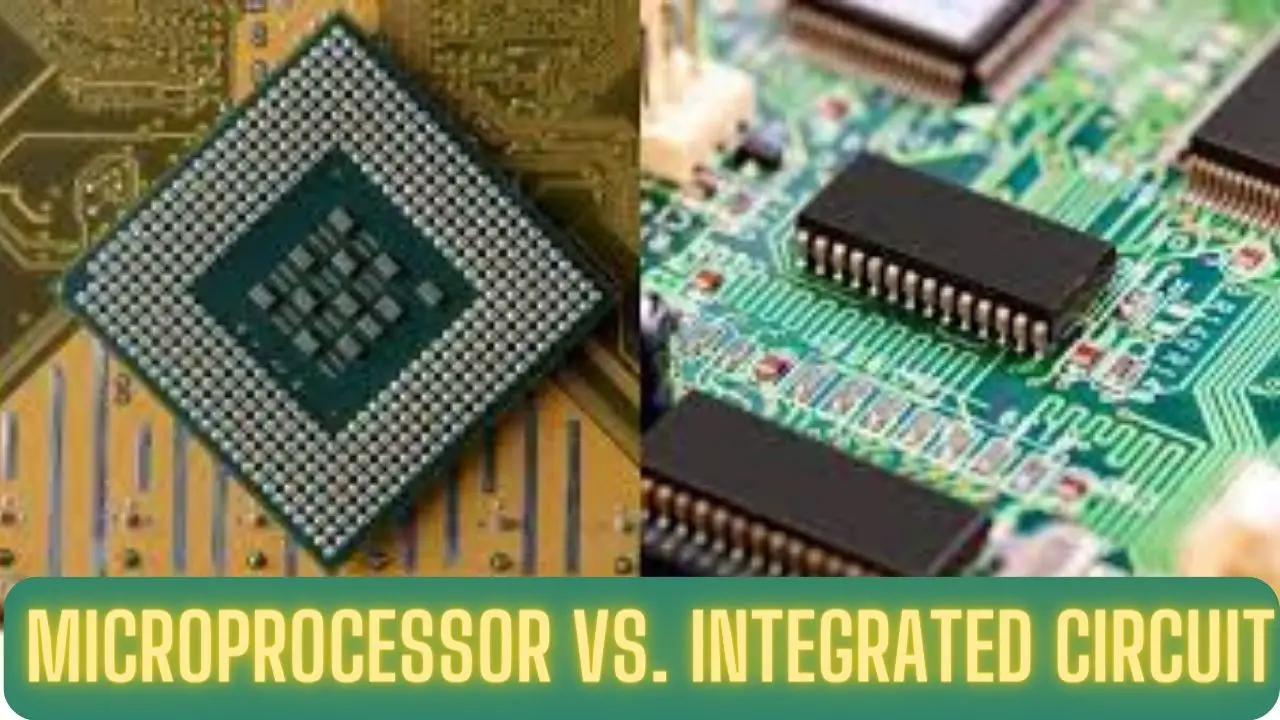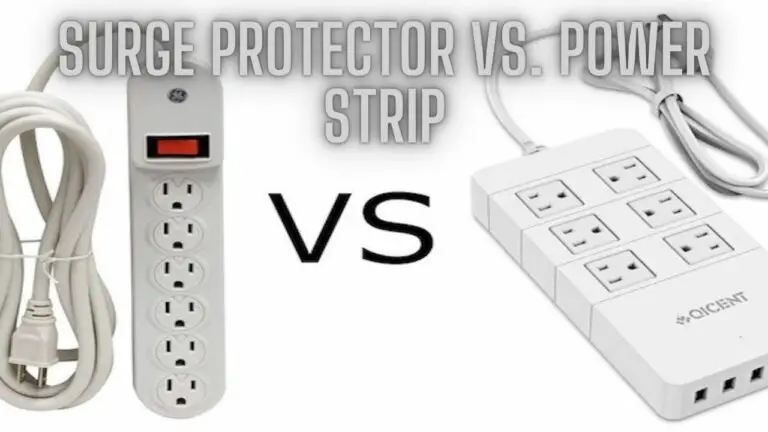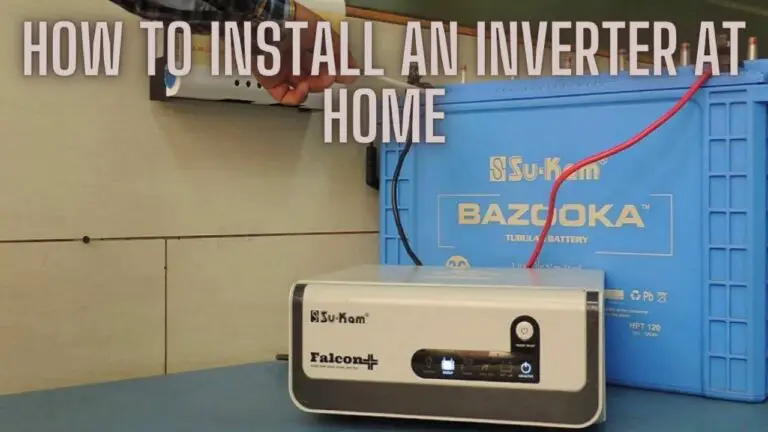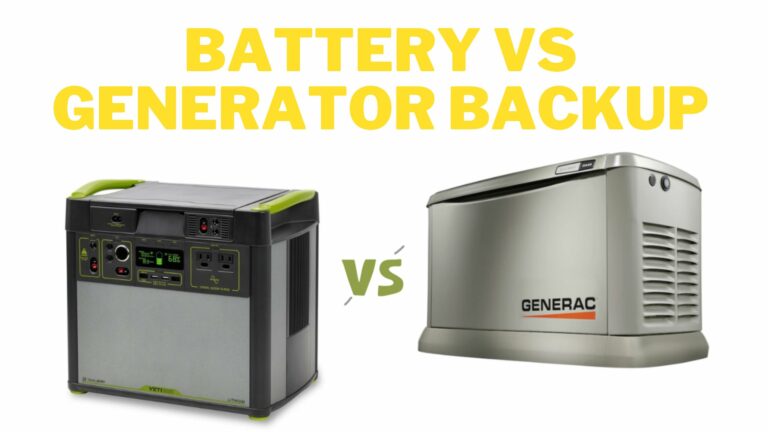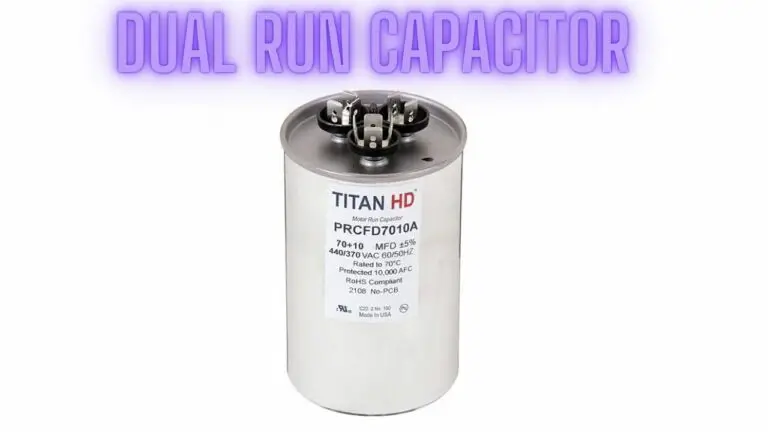Microprocessor vs. Integrated Circuit: Unveiling the Differences and Relationships
Introduction
The world of electronics is driven by innovation and advancements, and two terms that often come up are “microprocessor” and “integrated circuit.” While they are related, they represent different aspects of electronic technology. In this article, we’ll delve into the distinctions and connections between microprocessors and integrated circuits.
Understanding Integrated Circuits (ICs):
Integrated circuits, commonly referred to as ICs or chips, are the building blocks of modern electronics. An integrated circuit is a compact arrangement of electronic components, such as transistors, resistors, capacitors, and diodes, all etched onto a small silicon wafer. These components work together to perform specific functions, ranging from simple logic operations to complex computations.
ICs come in various types, such as analog ICs, digital ICs, and mixed-signal ICs. They are used in virtually every electronic device, from smartphones and laptops to appliances and vehicles. The invention of the integrated circuit revolutionized the electronics industry by enabling the creation of complex electronic systems on a single chip.
Types of Integrated Circuits
Integrated circuits (ICs) come in various types, each designed to perform specific functions in electronic devices. These types are categorized based on the components they integrate and the tasks they are optimized for. Here are some common types of integrated circuits:
- Analog Integrated Circuits: Analog ICs handle continuous signals and are used in applications that involve amplification, filtering, signal conditioning, and analog-to-digital conversion. Examples include operational amplifiers (op-amps), voltage regulators, and analog-to-digital converters (ADCs).
- Digital Integrated Circuits: Digital ICs process discrete signals and are fundamental to digital electronics. They include logic gates, flip-flops, counters, and shift registers. Digital ICs are used in digital systems, microcontrollers, and digital signal processors.
- Mixed-Signal Integrated Circuits: Mixed-signal ICs combine both analog and digital components. They are used in systems that require both analog and digital processing, such as data converters, sensor interfaces, and communication devices.
- Microcontroller Units (MCUs): MCUs are integrated circuits that combine a microprocessor, memory, and input/output peripherals in a single package. They are used for control and automation tasks in embedded systems, appliances, and consumer electronics.
- Memory Integrated Circuits: Memory ICs store data and instructions. Types of memory ICs include:
- RAM (Random Access Memory): Used for temporary data storage.
- ROM (Read-Only Memory): Contains permanent data or firmware.
- EEPROM (Electrically Erasable Programmable Read-Only Memory): Stores data that can be rewritten electrically.
- Power Management ICs: Power management ICs regulate and distribute power within electronic systems. They include voltage regulators, power switches, and power management controllers.
- Radio-Frequency Integrated Circuits (RFICs): RFICs are designed to handle radio-frequency signals and are used in wireless communication devices, such as cell phones, Wi-Fi routers, and Bluetooth devices.
- Sensor Interface ICs: These ICs interface with various sensors (e.g., temperature, humidity, motion) to convert their analog signals into digital data. They are widely used in IoT devices and industrial applications.
- Display Driver ICs: Display driver ICs control the pixels of liquid crystal displays (LCDs), organic light-emitting diode (OLED) displays, and other types of screens.
- Clock and Timing ICs: Clock and timing ICs generate and distribute clock signals within electronic systems, ensuring synchronization and precise timing.
- Communication ICs: Communication ICs enable data transmission and reception in various communication systems, including wireless, wired, and optical communications.
- Audio and Video ICs: Audio and video ICs process audio and video signals, performing tasks such as audio amplification, video decoding, and signal processing.
- Digital Signal Processing (DSP) ICs: DSP ICs specialize in processing digital signals for tasks like audio and image processing, speech recognition, and data compression.
- Power Amplifier ICs: Power amplifier ICs boost the power of signals before transmitting them to speakers or antennas. They are used in audio systems, RF transmitters, and more.
- Switching ICs: Switching ICs control the switching of electronic signals, enabling functions like voltage regulation, switching between multiple inputs, and power distribution.
These are just a few examples of the many types of integrated circuits available. Each type serves a specific purpose in electronic systems, contributing to the diverse functionalities and capabilities of modern devices.
Integrated circuit’s Benefits and Drawbacks
Benefits of Integrated Circuits:
Integrated circuits (ICs) have revolutionized the electronics industry and brought about numerous advantages that have transformed the way we design, build, and use electronic devices.
- Miniaturization: ICs allow complex electronic circuits to be packed onto a single chip, reducing the size of devices and enabling the creation of portable and wearable gadgets.
- Cost Efficiency: Mass production of ICs has significantly lowered the cost of electronic components, making technology more accessible to consumers and industries.
- Reliability: ICs are more reliable than discrete components because they are manufactured under controlled conditions, minimizing variations that can affect performance.
- Power Efficiency: ICs are designed to consume less power while providing high performance, making them suitable for battery-operated devices and energy-efficient systems.
- Performance: ICs can integrate multiple components and functions onto a single chip, enhancing overall system performance and enabling faster processing.
- Speed: The compact layout of ICs reduces the distance that signals need to travel, resulting in faster data transmission and reduced signal delay.
- Customization: ICs can be customized for specific applications, allowing manufacturers to tailor their functionality to meet specific needs.
- Improved Functionality: ICs enable the integration of diverse functions, such as analog and digital processing, memory storage, and communication interfaces, in a single package.
- Scalability: IC designs can be scaled up or down in size and complexity to accommodate different requirements and advancements in technology.
Drawbacks of Integrated Circuits:
While integrated circuits offer numerous benefits, they also come with certain drawbacks that need to be considered in their design and use.
- Complex Manufacturing Process: The fabrication of ICs involves intricate processes, such as photolithography and doping, which require specialized equipment and expertise.
- Initial Design Costs: Designing custom ICs can be expensive due to the need for specialized tools, software, and skilled designers. However, this cost can be offset by mass production.
- Vulnerability to Environmental Factors: ICs can be sensitive to environmental factors like temperature, humidity, and radiation, which can affect their performance and reliability.
- Obsolete Technology: Rapid advancements in technology can lead to the obsolescence of ICs, making it challenging to maintain and repair devices using outdated components.
- Limited Flexibility: Once an IC is manufactured, its design cannot be easily modified. This lack of flexibility can be a disadvantage if the requirements change after production.
- Heat Dissipation: As ICs become more powerful, heat dissipation becomes a challenge. High power densities can lead to overheating and affect performance and lifespan.
- Testing and Quality Control: Ensuring the quality and reliability of ICs requires rigorous testing processes, as defects can lead to malfunctioning devices.
- Intellectual Property Concerns: IC designs are valuable intellectual property, and unauthorized reproduction or reverse engineering can lead to copyright and security issues.
Understanding Microprocessors:
A microprocessor, on the other hand, is a specific type of integrated circuit. It is often referred to as the “brain” of a computer or electronic device. A microprocessor is responsible for executing instructions, performing calculations, and controlling the overall operation of a system. It integrates arithmetic logic units (ALUs), control units, and registers to process data and execute software instructions.
Microprocessors are at the heart of computers, smartphones, gaming consoles, and many other devices. They handle tasks ranging from running operating systems and applications to managing input and output operations.
Types of Microprocessors
Microprocessors come in various types, each designed for specific applications and computing needs. The classification is based on factors such as architecture, performance, power efficiency, and intended use cases. Here are some common types of microprocessors:
- General-Purpose Microprocessors: These microprocessors are designed for a wide range of computing tasks and applications. They power desktop computers, laptops, and servers. Examples include Intel Core series, AMD Ryzen series, and Apple’s M1 chip.
- Embedded Microprocessors: Embedded microprocessors are used in embedded systems, which are specialized computing systems designed for specific tasks or functions. They can be found in appliances, automotive systems, industrial machines, and consumer electronics. Examples include ARM Cortex-M series and Intel Quark series.
- Mobile Processors: Mobile processors are optimized for smartphones, tablets, and other mobile devices. They focus on power efficiency, performance, and integration of features like graphics processing units (GPUs) and AI capabilities. Examples include Qualcomm Snapdragon series and Apple A-series chips.
- Server Processors: Server processors are designed for data center and server environments. They prioritize multitasking, high performance, and reliability. Examples include Intel Xeon series and AMD EPYC series.
- Graphics Processing Units (GPUs): While primarily known for graphics rendering, modern GPUs are highly parallel processors capable of performing complex calculations. They are used in gaming, scientific simulations, machine learning, and more. Examples include NVIDIA GeForce and AMD Radeon series.
- Digital Signal Processors (DSPs): DSPs are specialized microprocessors designed for real-time signal processing tasks. They are used in applications like audio processing, telecommunications, and image processing.
- Microcontroller Units (MCUs): MCUs are integrated circuits that include a microprocessor, memory, and input/output peripherals. They are commonly used in embedded systems for control and automation applications. Examples include Atmel AVR, Microchip PIC, and ARM Cortex-M0.
- Application-Specific Integrated Circuits (ASICs): ASICs are custom-designed microprocessors tailored for specific applications. They offer high performance and energy efficiency but are costly to develop. ASICs are used in areas like cryptography, network processing, and specific industrial tasks.
- FPGA (Field-Programmable Gate Array): While not traditional microprocessors, FPGAs are reconfigurable hardware devices that can be programmed to perform various tasks. They offer high customization and can be used for tasks like hardware acceleration and digital signal processing.
- Neuromorphic Processors: Neuromorphic processors are inspired by the architecture of the human brain. They are designed for artificial intelligence and machine learning tasks, emphasizing parallel processing and energy efficiency.
- Quantum Processors: Quantum processors are highly specialized microprocessors that harness the principles of quantum mechanics for solving specific types of problems. They are used in quantum computers for tasks like cryptography and optimization.
Each type of microprocessor serves specific needs within the diverse landscape of computing and technology. The choice of microprocessor depends on the intended application, performance requirements, power efficiency, and budget considerations.
Benefits and Drawbacks of a Microprocessor
Benefits of Microprocessors:
Microprocessors are at the heart of modern computing and electronic devices, offering a multitude of advantages that have revolutionized the way we interact with technology.
- Processing Power: Microprocessors provide high-speed processing capabilities, enabling rapid execution of calculations, data manipulation, and complex tasks.
- Compactness: Microprocessors are incredibly small, allowing for the creation of compact devices like smartphones, tablets, and wearable gadgets.
- Versatility: Microprocessors can execute a wide range of instructions and tasks, making them suitable for various applications, from gaming and data analysis to control systems and artificial intelligence.
- Efficiency: Microprocessors are designed for efficiency, combining performance with energy conservation, which is vital for battery-operated devices and green technology.
- Integration: Microprocessors can integrate multiple functions, including memory management, input/output control, and data processing, within a single chip.
- Scalability: Microprocessors can be scaled up or down in terms of processing power and complexity to match the requirements of different applications.
- Real-Time Processing: Microprocessors enable real-time processing, crucial for applications such as robotics, autonomous vehicles, and industrial control systems.
- Accessibility: Microprocessors have democratized technology, making it accessible to a broader population by powering everything from personal computers to household appliances.
Drawbacks of Microprocessors:
While microprocessors offer exceptional benefits, they also come with certain limitations and challenges that need to be considered.
- Heat Generation: High-performance microprocessors can generate significant heat, requiring effective cooling solutions to prevent overheating and damage.
- Complexity: The design and fabrication of microprocessors involve intricate processes, often requiring specialized knowledge and equipment.
- Limited Parallelism: Although modern microprocessors are designed with multiple cores for parallel processing, some tasks might not be efficiently parallelizable, leading to performance limitations.
- Security Concerns: Microprocessors are susceptible to security vulnerabilities, such as software bugs, hardware vulnerabilities, and potential exploits.
- Power Consumption: While energy-efficient, some microprocessors still consume a considerable amount of power, which can be a concern for devices with limited battery life.
- Cost: High-performance microprocessors can be expensive to produce, impacting the overall cost of devices that incorporate them.
- Technological Obsolescence: The rapid pace of technological advancement can lead to microprocessors becoming outdated quickly, requiring frequent upgrades.
- Manufacturing Challenges: Fabricating microprocessors requires advanced manufacturing techniques, making the production process complex and potentially costly.
Key Differences between Microprocessor vs. Integrated Circuit:
- Function:
- Integrated Circuit: An IC is a general term that refers to a package of interconnected electronic components on a single chip, serving various functions.
- Microprocessor: A microprocessor is a specific type of IC designed to execute instructions and perform computations in electronic devices.
- Usage:
- Integrated Circuit: ICs are used in a wide range of applications, including amplification, signal processing, memory storage, and more.
- Microprocessor: Microprocessors are used as the central processing unit (CPU) in computers and devices to execute program instructions.
- Components:
- Integrated Circuit: An IC can contain various electronic components like transistors, capacitors, resistors, diodes, and more.
- Microprocessor: A microprocessor integrates components like ALUs, control units, registers, and cache memory.
- Complexity:
- Integrated Circuit: ICs can be simple or complex, performing specific functions based on the design.
- Microprocessor: Microprocessors are designed with complexity to handle a wide range of tasks, from basic calculations to intricate computations.
Relationship and Interdependence:
A microprocessor is a specific application of an integrated circuit. A microprocessor IC combines different integrated circuits, including ALUs, control units, and memory, into a single package. The microprocessor’s design determines its computing capabilities, clock speed, and performance.
Microprocessor vs. Integrated Circuit FAQS
What is the difference between a microprocessor and an integrated circuit?
A microprocessor is a specific type of integrated circuit (IC) that contains a central processing unit (CPU), while an integrated circuit is a broader term referring to a compact arrangement of electronic components on a single chip that performs various functions.
What is the primary function of a microprocessor?
A microprocessor’s primary function is to execute instructions, perform calculations, and control the overall operation of a computer or electronic device.
Can an integrated circuit perform the same tasks as a microprocessor?
Yes, integrated circuits can perform various tasks, including those handled by microprocessors. However, microprocessors are specialized for executing program instructions and are commonly used as CPUs in computers.
Are microprocessors and integrated circuits used in the same types of devices?
Yes, both microprocessors and integrated circuits are used in a wide range of electronic devices, from computers and smartphones to household appliances and industrial machinery.
How do microprocessors contribute to a device’s functionality?
Microprocessors provide the computational power and control necessary for devices to perform tasks, execute software, and manage input/output operations.
Are microprocessors and integrated circuits interchangeable terms?
No, microprocessors are a specific subset of integrated circuits. While all microprocessors are integrated circuits, not all integrated circuits are microprocessors.
What are the advantages of using integrated circuits?
Integrated circuits offer benefits such as miniaturization, cost efficiency, reliability, power efficiency, improved performance, and customization.
How do microprocessors enhance computing performance?
Microprocessors enhance computing performance by executing instructions at high speeds, performing complex calculations, and managing data efficiently.
Can integrated circuits be used for signal processing and memory storage?
Yes, integrated circuits can be designed for various purposes, including signal processing, memory storage, amplification, and control functions.
What challenges do microprocessors face in terms of heat dissipation?
High-performance microprocessors generate heat, and effective heat dissipation mechanisms are required to prevent overheating and ensure stable operation.
Are integrated circuits susceptible to security vulnerabilities?
Yes, integrated circuits, like microprocessors, can be vulnerable to security threats, including software bugs, hardware vulnerabilities, and potential exploits.
Can microprocessors be used for applications beyond computing?
Yes, microprocessors are used in various applications beyond computing, including robotics, automotive systems, industrial control, consumer electronics, and more.
Are microprocessors and integrated circuits subject to technological obsolescence?
Yes, both microprocessors and integrated circuits can become outdated due to rapid technological advancements, necessitating frequent upgrades.
Can integrated circuits be customized for specific applications?
Yes, integrated circuits can be customized to perform specific functions and tasks based on the requirements of the application.
Are microcontrollers a type of microprocessor or integrated circuit?
Microcontrollers are a type of integrated circuit that combines a microprocessor, memory, and input/output peripherals in a single package for control and automation applications.
Conclusion
In summary, while integrated circuits form the foundation of electronic devices, microprocessors represent a specialized type of integrated circuit designed to perform calculations and control operations. Understanding their differences and relationships is crucial for comprehending the intricate world of modern electronics and computing.

